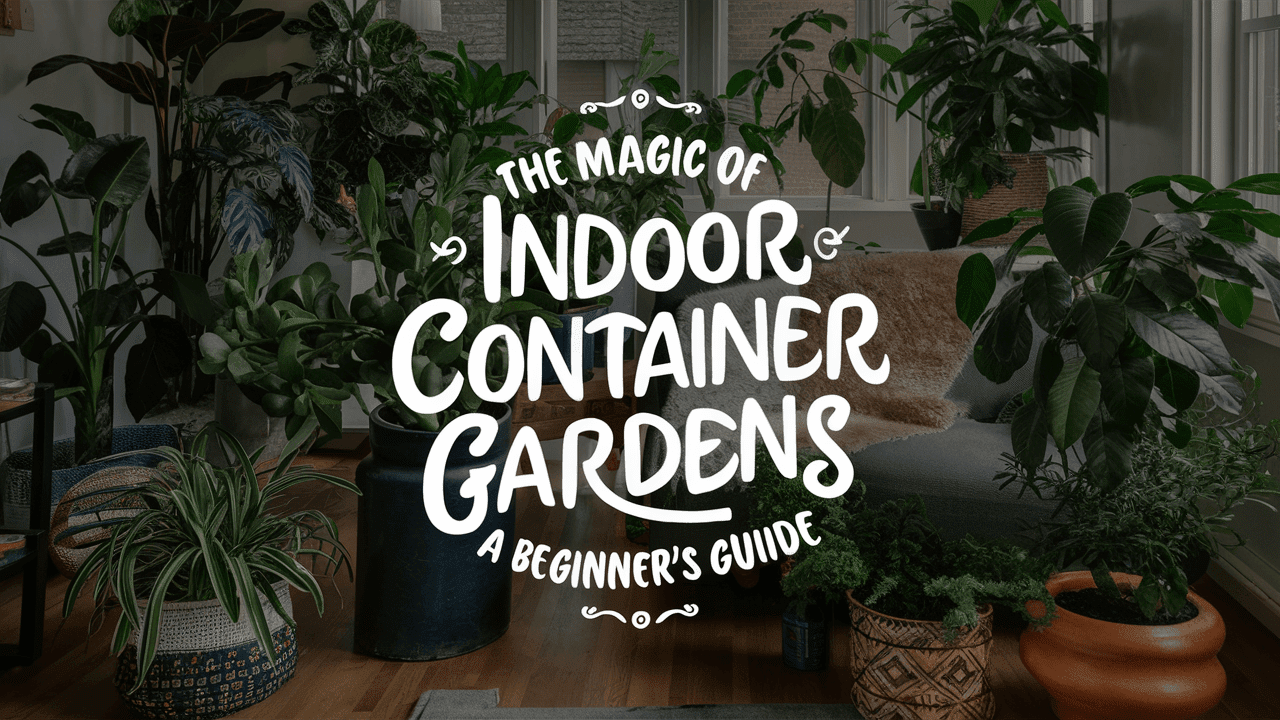Hey there, welcome to the world of indoor container garden!
Ever dreamed of having a garden but thought, “I don’t have a backyard!” or “My thumb isn’t green, it’s more of a brownish color”? Well, guess what? You don’t need a huge yard or superpowers to grow your own indoor container garden. It’s like having a mini jungle right in your living room, and trust me, it’s way easier than you think.
Imagine this: You’re chilling at home, and you just pluck fresh basil for your spaghetti sauce or snip off some mint for your iced tea. Sounds fancy, right?
Well, that’s the magic of indoor container gardening! You get fresh herbs, veggies, and even flowers without stepping outside. Plus, it’s a great way to add a little greenery to your space and maybe even impress your friends with your newfound gardening skills.
So, let’s dive in! Whether you’re a total newbie who kills every plant (it’s okay, we’ve all been there) or you’ve got a bit of gardening experience, this guide will help you create your very own indoor oasis.
Ready to get your hands dirty (in a good way) and start your green adventure? Let’s go!
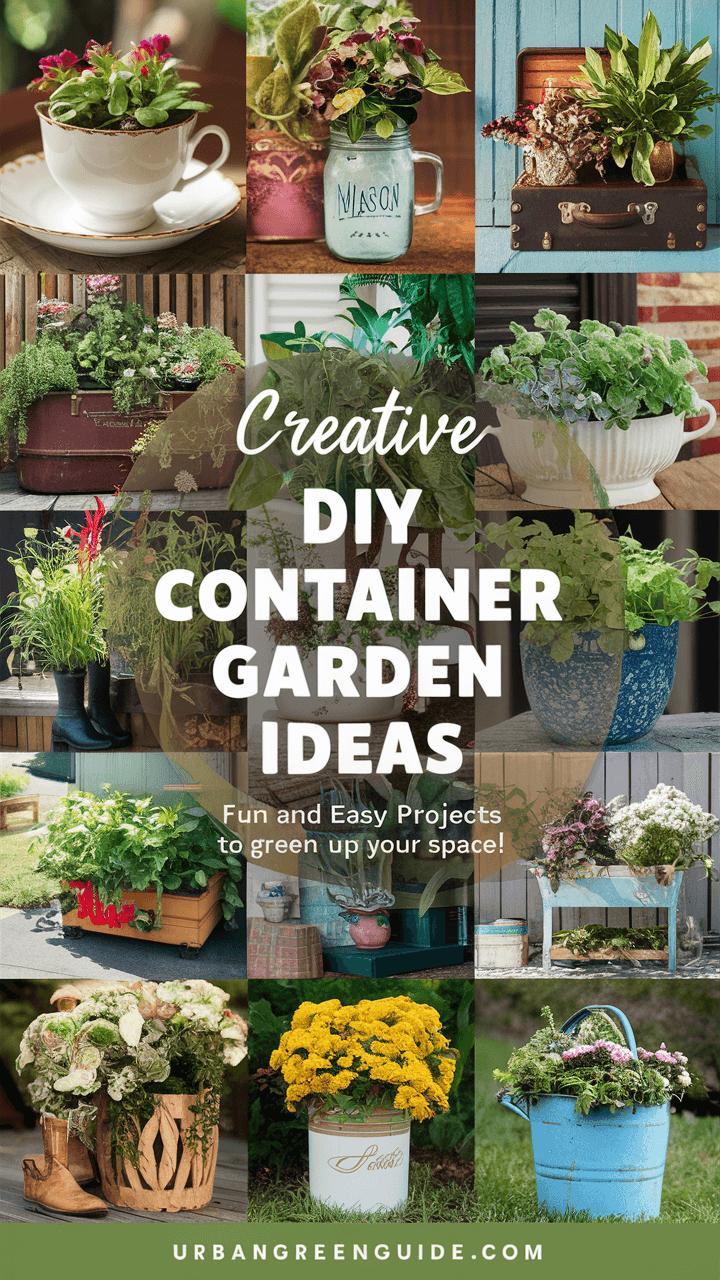
Why Choose Indoor Container Gardening?
Indoor container gardening offers many benefits beyond just beautifying your home. It's a great way to purify the air, boost your mood, and even grow your own food. Plus, it's perfect for those of us who might not have a big backyard (or any yard at all). But the best part? You can get creative with containers, making it a fun and rewarding hobby.
Getting Started with Indoor Container Garden
Location: Finding the Perfect Spot
Hey there, fellow garden enthusiast! So, you’re ready to start your very own indoor container garden? That’s awesome! First things first, let’s talk about location. Just like in real estate, when it comes to gardening, it’s all about “location, location, location!”
Light Up Your Space
Plants need sunlight to grow big and strong. Find a spot in your home that gets a lot of natural light. South-facing windows are usually the best because they get the most sunlight. If you don’t have a sunny window, don’t worry! You can use grow lights to give your plants the light they need. They’re like magic lamps for plants!
Temperature Matters
Plants aren’t too picky, but they do like a comfy temperature. Most indoor plants thrive in temperatures between 60°F and 75°F (15°C to 24°C). Avoid placing your plants near drafty windows or heating vents. Just like us, they don’t like being too hot or too cold.
Space to Grow
Think about the space you have available. Do you have room for big pots, or do you need to stick to smaller containers? Remember, your plants will grow, so give them enough space to stretch their roots and leaves.
Choosing the Right Container: Home Sweet Home for Your Plants
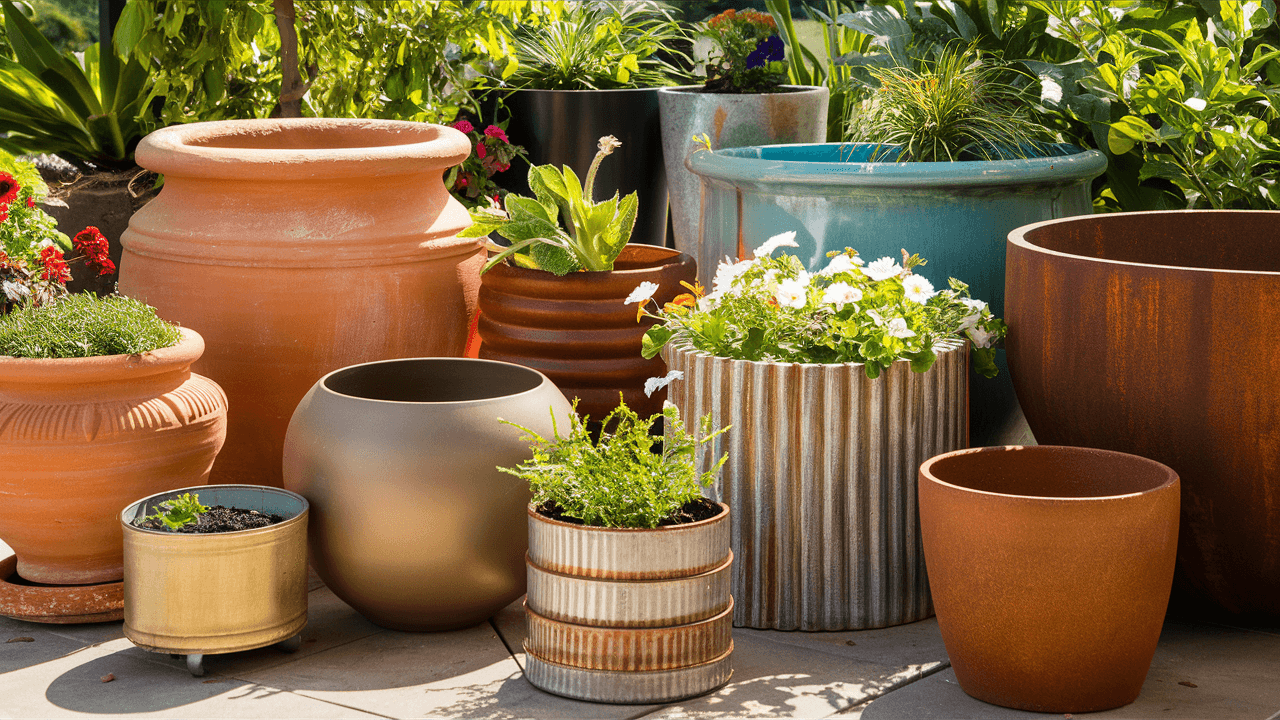
Now that you’ve found the perfect spot, it’s time to choose the right container. This is like picking out the perfect house for your plants.
Size Matters
The size of your container depends on the type of plants you want to grow. Smaller plants like herbs and succulents don’t need much space, but if you’re growing tomatoes or peppers, you’ll need a bigger pot. Make sure the container is deep enough for the roots to grow.
Drainage is Key
Plants don’t like soggy feet! Make sure your containers have drainage holes at the bottom. This helps excess water escape and prevents root rot. If your favorite pot doesn’t have holes, you can drill some yourself or use it as a decorative cover for a plain pot with holes.
Material World
Containers come in all sorts of materials like plastic, clay, metal, and wood. Plastic pots are lightweight and retain moisture well, while clay pots are heavier and let the soil dry out faster. Choose the material that suits your plants and your style.
Best Containers for Indoor Plants
Terracotta pots are a classic choice, but don't be afraid to get creative with containers like mason jars, teacups, or even old boots!
Large Indoor Planter Ideas
If you're looking for something big, bold and beautiful, consider large planters that can hold multiple plants. This not only looks impressive but also creates a mini-ecosystem where plants can thrive together.
Picking the Perfect Plants: Green Friends for Every Home

Now that you have your containers, it's time to pick the plants! Not all plants are created equal, and some are much easier to grow indoors than others.
Picking the right plants for your indoor container garden is super important. Here are some great options for best indoor plants for beginners:
Herbs: Easy and Tasty
Herbs like basil, mint, and parsley are perfect for indoor gardens. They don’t take up much space, they grow quickly, and they add flavor to your cooking.
Leafy Greens: Fresh and Healthy
Lettuce, spinach, and arugula are great choices for indoor gardening. They grow well in containers and can be harvested multiple times.
Flower Power: Bright and Beautiful
If you want some color in your life, try growing flowers like petunias, marigolds, or pansies. They brighten up any room and make you smile every time you see them.
Succulents and Cacti: Low Maintenance
If you’re looking for something low maintenance, succulents and cacti are the way to go. They need very little water and can survive in various conditions.
Pro tips: Indoor plants like basil, mint, parsley, lettuce, spinach, and arugula are easiest vegetables to grow inside.
Soil Mix: The Foundation of a Healthy Garden
The soil mix you use is like the bed your plants sleep in. It needs to be just right for them to grow strong and healthy.
The Perfect Blend
A good soil mix for indoor container gardens should be light and well-draining. You can buy pre-made potting mix from the store, or you can make your own by mixing equal parts of peat moss, perlite, and vermiculite.
Feeding the Soil
Some soil mixes come with added nutrients, but your plants will still need a little extra food. You can mix in some compost or slow-release fertilizer to give your plants a boost.
How to Plant Your Containers: Let’s Get Digging!
Now that you have everything ready, it’s time to plant your containers. Here’s how to do it:
- Fill the Container: Fill your container with soil mix, leaving about an inch of space at the top.
- Planting Time: Make a small hole in the soil and place your plant in it. Cover the roots with soil and gently press down to secure the plant.
- Water Well: Give your new plant a good drink of water. Make sure the water drains out of the bottom of the container.
- Label Your Plants: If you’re planting different types of plants, it’s a good idea to label them. This way, you won’t forget what you planted where.
Here's a video guide by Ashley. In this video, Ashley shows you how to get started with indoor container gardening on a budget. Learn how to choose the right potting mix, container, and seed packets on a low budget. Watch below!
Caring for Your Container Gardens
Congratulations! Your indoor container garden is all set up. Now let’s talk about how to take care of your new green friends.
Light: Shine Bright
As we mentioned earlier, plants need light to grow. Place your containers in a spot where they get plenty of natural light. If you’re using grow lights, keep them on for about 12-16 hours a day. Remember to adjust the height of the lights as your plants grow.
Watering: Goldilocks Style
Watering your plants can be tricky. Too much water can drown them, and too little water can dry them out. Here’s how to get it just right:
- Check the Soil: Stick your finger about an inch into the soil. If it feels dry, it’s time to water. If it’s still moist, wait a day or two.
- Water Evenly: Water the soil evenly until you see water coming out of the drainage holes. This ensures that the roots get enough water.
- Avoid Overwatering: Don’t let your plants sit in water. Empty the saucer under the pot after watering to prevent root rot.
Feeding: Food for Thought
Plants need nutrients to grow, just like we need food. Here’s how to keep them well-fed:
- Fertilize Regularly: Use a balanced liquid fertilizer every 2-4 weeks during the growing season. Follow the instructions on the label for the right amount.
- Slow-Release Options: You can also use slow-release fertilizers that provide nutrients over time. These are great for busy gardeners.
- Compost Magic: Adding a little compost to your soil mix can provide extra nutrients and improve soil structure.
Maintenance: Keep Your Garden Happy
A little maintenance goes a long way in keeping your garden healthy and happy.
- Pruning: Trim dead or yellowing leaves regularly. This keeps your plants looking neat and encourages new growth.
- Pinching: For herbs and leafy greens, pinch off the tips to encourage bushier growth. This also prevents them from getting too leggy.
- Pest Patrol: Keep an eye out for pests like aphids and spider mites. If you spot any, treat your plants with insecticidal soap or neem oil.
Trellises and Support: Helping Your Plants Stand Tall
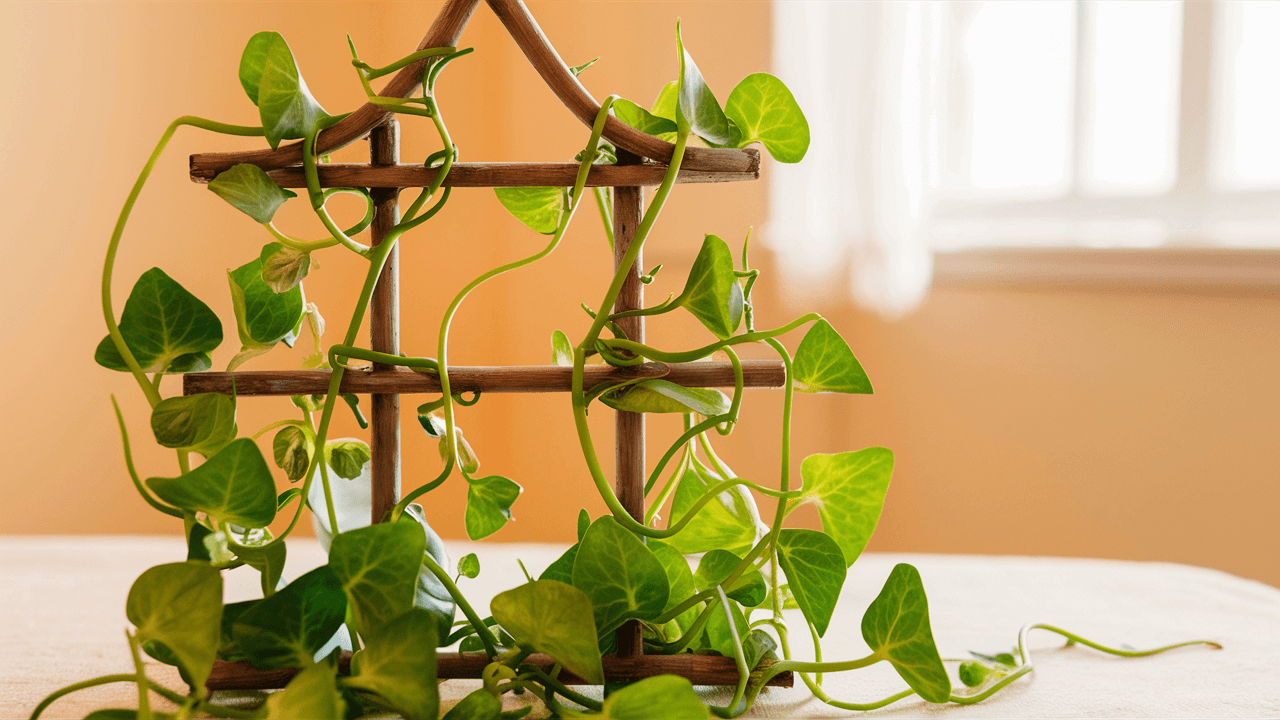
Some plants, like tomatoes and cucumbers, need a little extra support to grow upright. Here’s how to give them a helping hand:
- Trellises: Use a trellis or a stake to support tall or climbing plants. This keeps them off the ground and makes harvesting easier.
- Cages: Tomato cages are great for supporting heavy fruit-bearing plants. They help keep the branches from breaking under the weight of the fruit.
- Ties: Use soft plant ties or strips of cloth to gently tie your plants to the support. Make sure they’re not too tight to avoid damaging the stems.
Additional Tips and Tricks: Become a Container Garden Pro
Rotate Your Plants
Plants tend to grow towards the light, which can make them lean to one side. Rotate your containers every week or so to keep them growing straight and evenly.
Grouping Plants
Group plants with similar light and water needs together. This makes it easier to care for them and ensures they all get the right amount of attention.
Seasonal Changes
As the seasons change, so do the needs of your plants. In the winter, you might need to move your plants closer to the windows to get enough light. In the summer, make sure they don’t get too hot and dry out.
Harvesting
When it comes time to harvest your herbs and vegetables, do it regularly. This encourages more growth and keeps your plants productive. Plus, there’s nothing like the taste of fresh, home-grown produce!
Common Problems and Solutions: Troubleshooting Your Garden
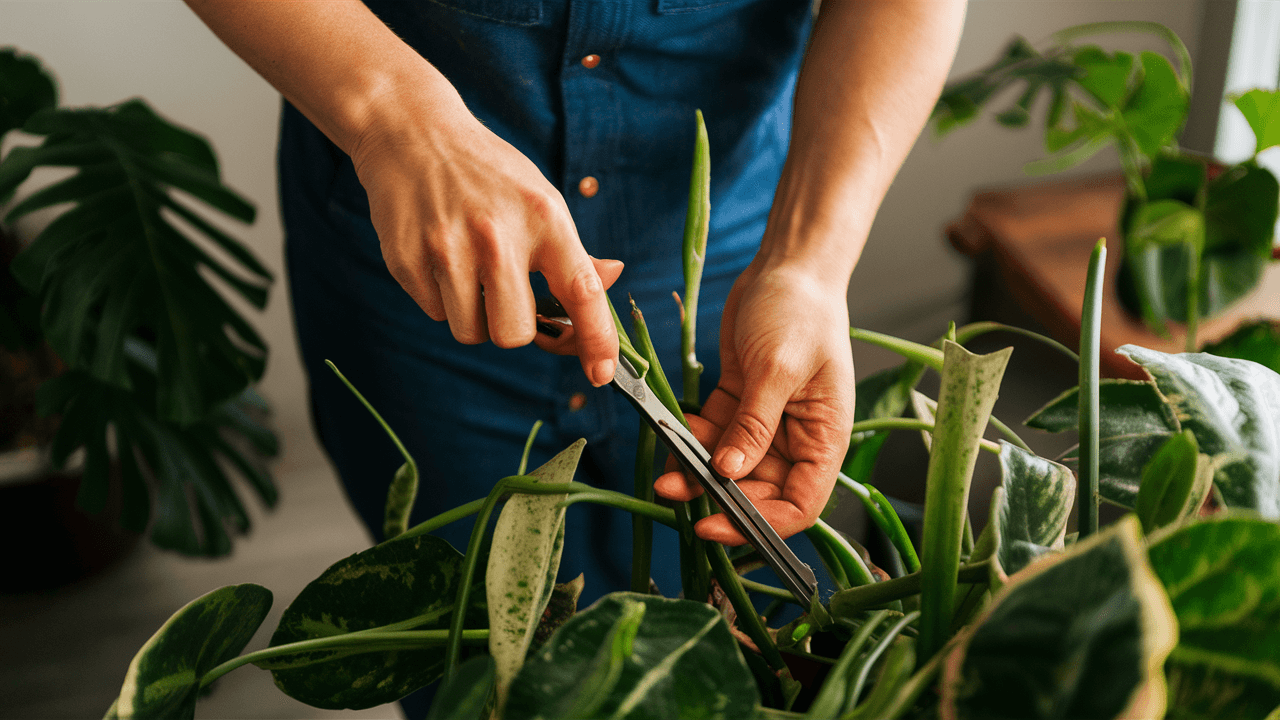
Every gardener faces challenges, and indoor container gardening is no exception. Here are some common issues and how to solve them.
Yellow Leaves
Yellow leaves can be a sign of overwatering, underwatering, or nutrient deficiency. Check your watering schedule and make sure your plants are getting enough (but not too much) water. If the problem persists, try adding some fertilizer.
Wilting
Wilting can be caused by both overwatering and underwatering. Check the soil moisture and adjust your watering accordingly. Also, make sure your plants aren’t getting too much direct sunlight, which can cause them to wilt.
Pests
If you notice tiny bugs on your plants, don’t panic! Most pests can be dealt with using insecticidal soap or neem oil. For a natural solution, you can also use a mixture of water and dish soap to spray on the affected areas.
Slow Growth
If your plants aren’t growing as fast as you’d like, they might need more light or nutrients. Move them to a sunnier spot or add some fertilizer to give them a boost.
Creative Container Gardening Ideas
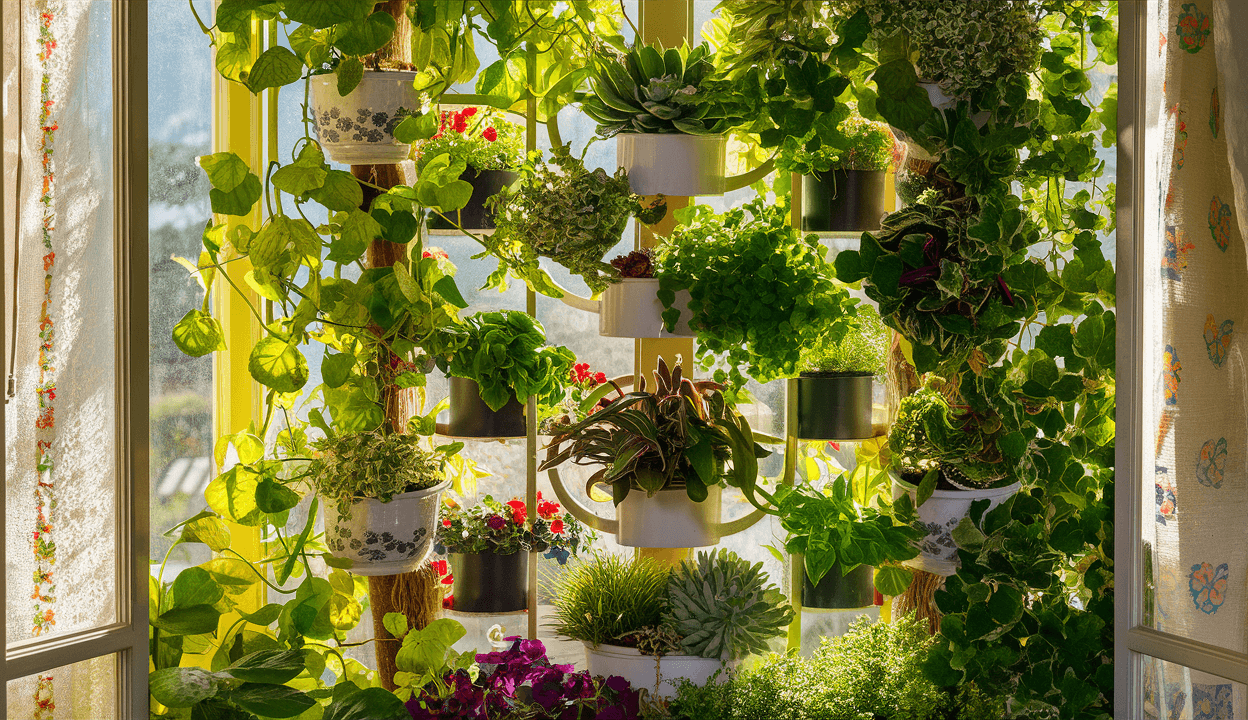
Indoor container gardening isn't just about practicality; it's also about having fun and expressing your creativity.
DIY Container Garden Ideas
Are you ready to get crafty? DIY container gardens are a fun way to personalize your indoor garden and make it unique. Here are some creative ideas to get you started:
Cheap Container Garden Ideas: Recycled Containers
You can use almost anything as a container for your plants. Old tin cans, mason jars, plastic bottles, and even old boots can make quirky and charming planters. Just make sure to add drainage holes if they don’t have any.
Also check out this video for a clever and eco-friendly way to grow lettuce plants using recycled plastic bottles. It’s a fun and sustainable approach to indoor container gardening!
Vertical Gardens
If you’re short on space, a vertical garden is a great solution. You can use a wooden pallet, a hanging shoe organizer, or even a ladder to create a vertical garden. Attach pots or pockets to the structure and fill them with your favorite plants.
Miniature Gardens
Create a tiny world with a miniature garden. Use a shallow dish or a tray and fill it with small plants, pebbles, and tiny decorations like fairy houses or tiny furniture. It’s like having a little piece of nature on your tabletop.
Repurposed Furniture
Turn old furniture into garden planters. An old dresser can become a tiered garden by filling the drawers with soil and plants. An unused bookshelf can house a variety of potted plants, creating a green display.
Other Creative Ideas for Plant Containers

Think outside the box! How about using an old toy truck, a vintage suitcase, or a worn-out boot? The possibilities are endless and can add a unique touch to your indoor garden.
These are cheap container garden ideas and are super affordable, so you can transform your home into a green oasis without breaking the bank. In fact, you might even end up spending less than a cup of coffee!
Hanging Indoor Container Gardens
Hanging gardens are perfect for adding greenery without taking up floor space. They also add a beautiful, decorative element to your home. Here’s how to create your own hanging garden:
Hanging Baskets
Hanging baskets are classic and versatile. You can hang them from the ceiling, balcony railings, or hooks. Fill them with trailing plants like ivy, spider plants, or trailing succulents for a cascading effect.
Macrame Plant Hangers
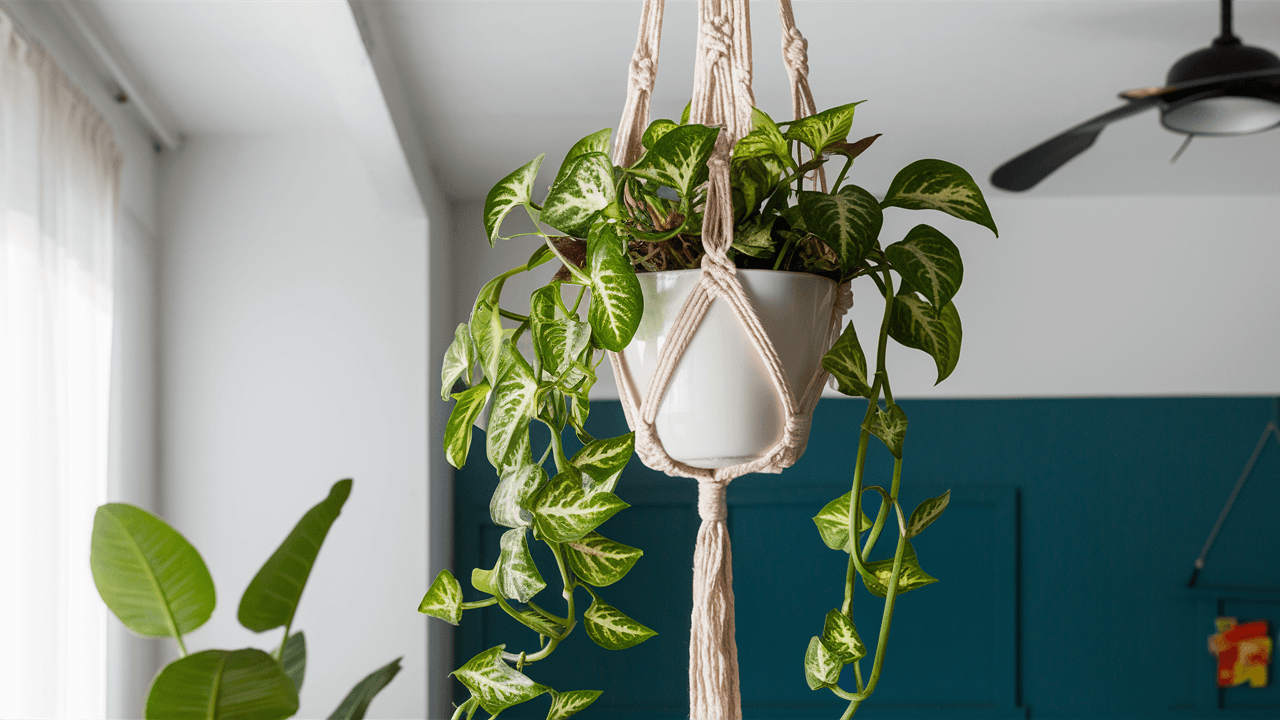
Macrame plant hangers are trendy and add a boho touch to your decor. You can buy them or make your own using simple knots and cord. Hang your favorite potted plants in macrame hangers for a stylish display.
Wall-Mounted Planters
Wall-mounted planters save space and add a green touch to your walls. You can buy ready-made wall planters or make your own using wooden boxes or metal containers. Arrange them in a pattern for an eye-catching display.
Hanging Terrariums
Terrariums are small, enclosed gardens that are perfect for hanging. You can use glass orbs, geometric shapes, or even old light bulbs to create hanging terrariums. Fill them with succulents, air plants, or moss for a low-maintenance garden.
Seasonal Indoor Container Gardening
Gardening doesn't have to stop when the weather gets cold. With indoor container gardening, you can grow plants all year round.
Indoor Container Gardening in Winter
Winter can be tough for plants, but with a little extra care, your indoor container garden can thrive even in the cold months. Here’s how to keep your garden going strong through winter:
Maximizing Light

Winter days are shorter, so your plants may not get as much natural light. Move your containers to the sunniest spots in your home, such as south-facing windows. You can also use grow lights to supplement natural light and keep your plants happy.
Managing Temperature
Indoor temperatures can fluctuate in winter, especially near windows and doors. Keep your plants away from drafty areas and cold windows. If possible, maintain a consistent temperature around 65°F to 75°F (18°C to 24°C) to keep your plants comfortable.
Adjusting Watering
Plants need less water in winter because they grow more slowly. Be careful not to overwater them. Check the soil moisture before watering and only water when the top inch of soil is dry. Make sure to empty any excess water from saucers to prevent root rot.
Humidity Matters
Indoor air can be very dry in winter, which can stress your plants. Increase humidity by using a humidifier, placing a tray of water near your plants, or grouping plants together. Misting your plants can also help, but be careful not to overdo it.
Winter-Blooming Plants
Some plants actually bloom in winter and can add a splash of color to your home. Consider adding winter-blooming plants like poinsettias, Christmas cacti, or cyclamens to your indoor garden for some winter cheer.
Rotating Plants
Rotate your plants every few days to ensure all sides get an equal amount of light. This prevents them from leaning towards the light source and keeps them growing evenly.
Extra Care for Delicate Plants
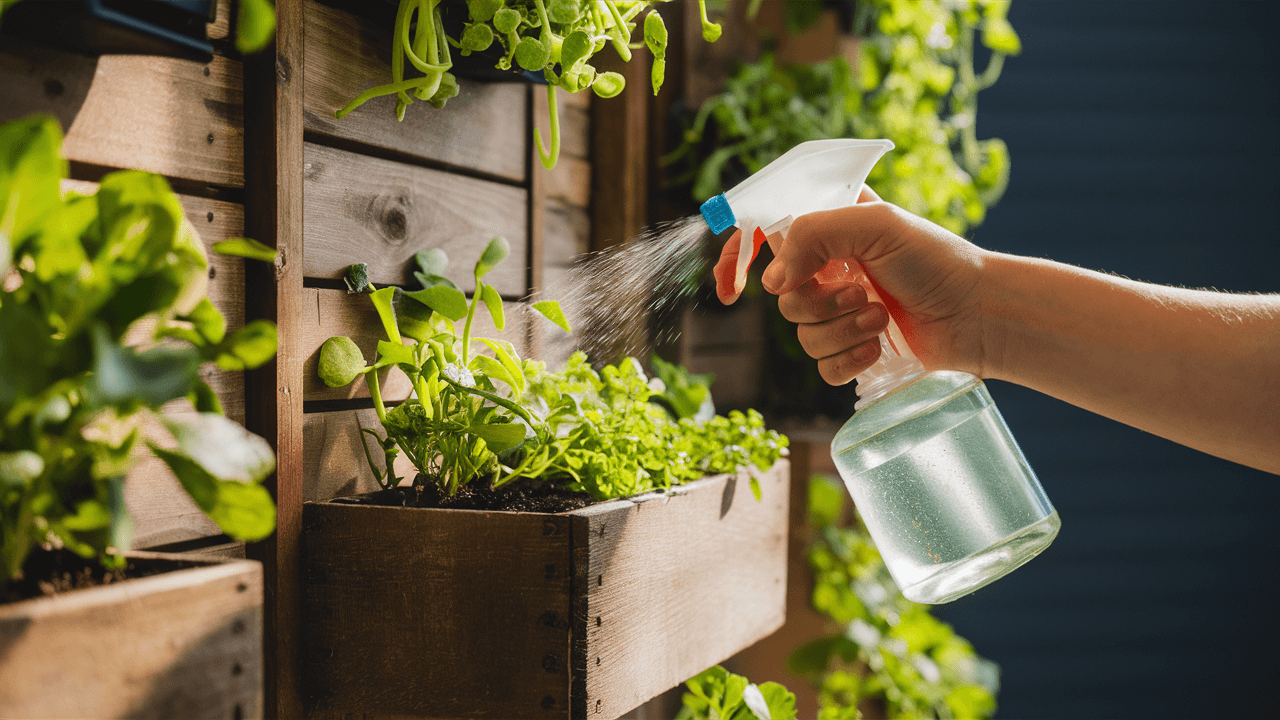
Some plants are more sensitive to winter conditions than others. Pay extra attention to delicate plants like tropicals and ferns. Make sure they’re getting enough light, humidity, and consistent temperature.
Preparing for Spring
As winter comes to an end, start preparing your indoor garden for spring. Gradually increase watering as the days get longer and your plants start to grow more actively. You can also start fertilizing again to give your plants a boost for the growing season.
FAQ
How do you make an indoor garden container?
Easy peasy! Find a container (pots, old jars, even tin cans). Make sure it has drainage holes, fill it with good-quality soil, and voila! You’re ready to plant.
What is a disadvantage to container gardening?
Well, containers can dry out faster than garden beds. But don’t worry, just keep an eye on the soil moisture and water when needed.
What container is best for indoor plants?
Plastic pots, clay pots, ceramic pots—each has its perks. The best container is one that fits your plant's size and has drainage holes.
What is the easiest vegetable to grow inside?
Lettuce and spinach are super easy and grow quickly indoors. Plus, you’ll have fresh salad greens on hand!
Can I use regular garden soil for indoor container gardening?
While you can use garden soil, it’s better to use a specially formulated potting mix. Potting soil is lighter, drains better, and provides the right nutrients for container plants.
How often should I water indoor plants?
The frequency depends on the plant and its environment. Generally, you should water when the top inch of soil feels dry. Be sure not to overwater, as this can lead to root rot.
Do indoor plants need fertilizer?
Yes, indoor plants benefit from regular feeding. Use a balanced, water-soluble fertilizer every 4-6 weeks to ensure your plants get the nutrients they need to thrive.
Your Green Thumb Adventure
Congratulations! You’re now equipped with all the knowledge you need to start and maintain your very own indoor container garden. It’s a fun and rewarding hobby that not only brightens up your home but also provides you with fresh, home-grown produce.
Remember, gardening is a journey, and it’s okay to make mistakes along the way. Each plant you grow will teach you something new. So, grab your pots, pick your plants, and let’s get growing!
For more tips and inspiration, check out these DIY Container Garden Ideas and Best Indoor Plants for Beginners.
Happy gardening!

